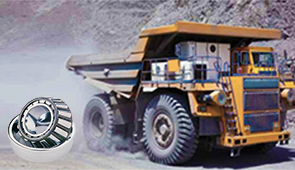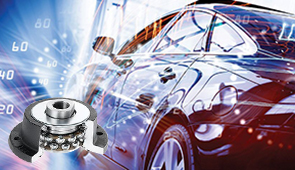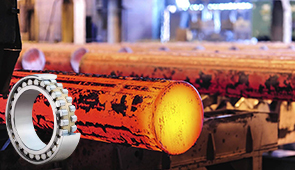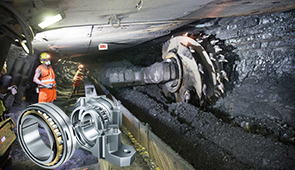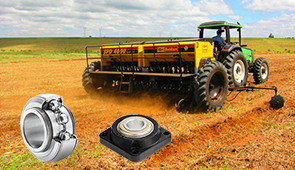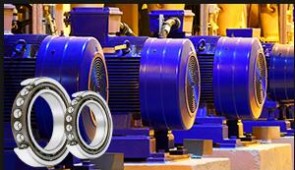Understanding the Electric Motor Shaft: Importance, Materials, and Maintenance
Electric Motor shafts, although often ignored, are among the most important parts that contribute to the working principle of electric motors. Acting as an interface between the motor and the mechanical load it drives, the shaft must transfer power smoothly and efficiently. Beyond this, the materials selected for a shaft, engineering considerations, and maintenance all have a bearing on the motor’s performance and life. The article will discuss in detail the electric motor shaft function, material influence, and select issues related to its proper functioning throughout service life. Whether you are a technician, an engineer, or just curious to expand your knowledge of motor systems, this article will enrich your insight into increasing motor efficiency and life.
The Role of the Electric Motor Shaft
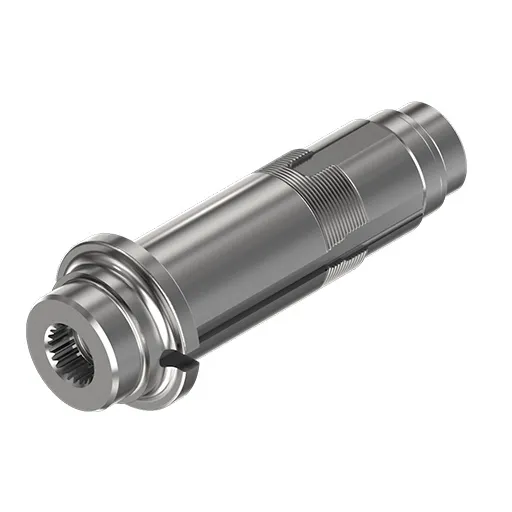
Function of the Motor Shaft in Electric Motors
The electric motor shaft is the chief mechanical link between the motor and the outside parts it drives. It essentially transmits the rotational motion and torque produced by the motor to other parts of a system, such as gears, pulleys, or actuators, transferring mechanical energy, thus allowing the motor to fulfill the technical function for which it is designed within the machinery.
Material choice for the motor shaft is critical in rendering it useful and long-lasting. Some of the factors considered could include tensile strength, fatigue resistance, and corrosion resistance. High-strength steels or alloys may be used so that shafts can withstand the stresses and working conditions without deformation or failure. Furthermore, careful workmanship must provide proper alignment and balancing so that vibration is kept to a minimum in operation.
Maintenance in the proper way shall assure the good performance of the shaft. The shaft must be checked for any wear, misalignment, or surface damage to avoid sudden failure. The lubrication on the mating surface is necessarily another point to decrease friction and to keep the shaft from an excessive build-up of heat. If all these mains of design and maintenance are taken care of, the motor shaft will achieve its function well, and consequently, the motor efficiency and system reliability will both be multiplied.
Importance of the Motor Shaft in Various Applications
The motor shaft stands as that splendid mechanical structure that transmits torque and rotational energy from the motor to the engaged load or machinery. The shaft holds importance as it converts electrical energy into mechanical motion to ensure the smooth functioning of the systems or applications for which it is being employed. Because of this immense utility, motor shafts find their applications in various industries such as manufacturing, automotive, aerospace, and energy production. For example, motor shafts in conveyor systems help convey products with precision, while in automotive applications, motor shafts are integral to driving components such as gears, pumps, and fans.
The better the performance of a motor shaft, the better the efficiency and dependability of the whole system are going to be. Present-day material science brings liberal options like the application of high-strength alloys and composite materials for further enabling shafts to bear higher loads and enhancing shaft life. On the other hand, currently, advanced precision engineering methods such as CNC machining and surface treatment come into play in limiting the tolerance deviation and wear on shafts to minimum values. Motor shaft performance failures increased downtime, degraded performance of the system, and higher maintenance costs can arise due to improper alignment, excessive vibrations, or lack of lubrication.
Through an understanding of motor shafts’ critical functions, plus modern manufacturing practices and rigorous quality control measures, industries can thoroughly enhance operational efficiency and increase equipment life.
Impact of Frame Size on Motor Shaft Performance
The frame size of a motor has a direct and profound effect on motor shaft performance, which mainly concerns torque transmission, mechanical stress, vibration characteristics, and overall durability. The following five critical aspects detail the relationship between frame size and motor shaft performance:
- Torque Transmission Capability: Higher values of torque transmission generally correspond with higher values of frame size, with an increase in shaft diameter and material strength. This reduces the concentration of stress and helps in managing shaft deformation under load.
- Vibration Damping Characteristics: The size of the frame influences the rigidness and structural support of the motor in assembly, so as to influence its natural frequency. The larger the frame, the better the vibration damping, hence reducing any detrimental resonance.
- Thermal Dissipation Efficiency: The frame dimensions influence the heat dissipation, with large-frame motors facilitating more efficient cooling. This, in turn, reduces the thermal stress imposed upon the shaft, which could otherwise lead to fatigue of the materials due to overheating.
- Load-Bearing Capacity: It is a case of direct proportionality between frame size and the safe load the motor shaft can sustain. The bigger the frame size, the bigger and stronger the shaft can be made to hold high axial and radial loads without risking shaft damage.
- Alignment Precision and Shaft Deflection: Smaller frame sizes are more prone to misalignment and deflection problems due to a low level of mechanical resistance. Larger frames, in contrast, promote greater alignment precision and lessen both operational downtime and mechanical wear.
Hence, these factors accentuate that selecting a correct frame size for any motor becomes of paramount importance as it directly influences the motor shaft’s mechanical and operational stability. Optimizing frame size hence leads to mainstreaming enhanced reliability and cost-effectiveness in any industry.
Materials Used in Electric Motor Shaft Construction
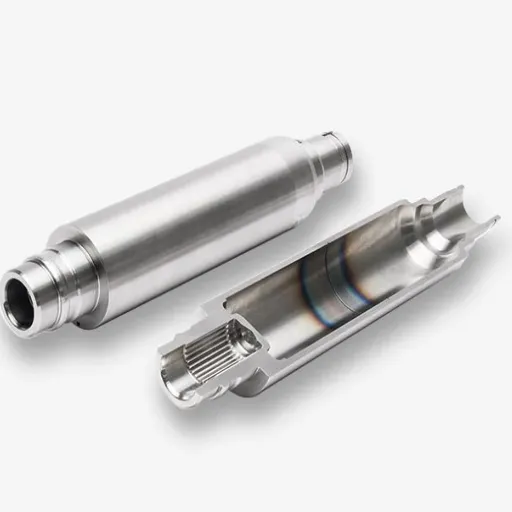
Common Materials and Their Properties
Electric motor shafts are made using a plethora of materials, with the choice depending on the material’s mechanical properties, cost, and application suitability. The materials most commonly in use for electric motor shafts are summarized here:
- Carbon Steel: This is one of the most commonly used materials for motor shafts, owing to its property of being high in strength and cost-efficient. With good tensile strength, hardness, and machinability, special grades such as AISI 1045 can be used in most industrial applications. Carbon steel shafts are usually heat-treated to enhance wear resistance and toughness.
- Alloy Steel: These steels have chromium, molybdenum, and nickel added for improved corrosion resistance, fatigue strength, and impact strength. Common alloys like SAE 4140 and 4340 are applied in shafts subjected to heavy loading and demanding riding conditions. The enhanced durability reputed alloy steel fits high-performance motors.
- Stainless Steel: Depending upon the corrosion resistance required, stainless steel is chosen for particular applications. Popular marine or chemical-grade stainless steel includes 304 and 316, which perform well under corrosive conditions while maintaining strength. Of course, price dictates selective usage within truly critical environments.
- Aluminum Alloys: Due to their low weight, aluminum alloy shafts are used in applications where weight reduction is an important consideration for the motor system. Also termed corrosion-resistant with excellent machinability, aluminum alloys generally possess a lower strength compared to steels. Aluminum is best suited for compact, lightweight motor designs.
- Composites and Advanced Materials: As composites such as carbon fiber gain acceptance in specialized, high-performance applications, instead of traditional metals, these materials offer outstanding strength-to-weight ratios and vibration-damping characteristics; the costs and complexities of manufacturing restrict their widespread usage.
When deciding on a material for an electric motor shaft, engineers must take into account the considerations pertaining to the application in question, the operating environment, and the cost. Consequently, the clear evolution in the use of advanced computational systems and experimental ways leads to estimating material performances and optimizing the materials choice for perfect reliability and high endurance
Why Material Selection Matters
Material selection becomes one of the important processes that entails the actual overall performance and efficiency of the mechanical system and applications such as electric motor design. Hence, this process should guarantee that the material selected fulfills the structural, thermal, and operational requirements without compromise. For instance, an inappropriate selection of material or even using inferior ones may lead to excessive wear, reduced system efficiency, and premature failures under load, and all of these increase maintenance and operational costs all the way through.
With the encouragement of modern advancements in materials engineering, the selection of materials that can be used for certain purposes has tremendously enlarged. For instance, alloys having advanced properties such as high tensile strength, corrosion resistance, and thermal stability are being used more and more in high-performance environments. Newer emerging technologies, such as computational material science, allow engineers to simulate and predict materials’ behaviors under different conditions so that they can make more data-driven, precise decisions. Such an approach not only serves to minimize trial-and-error in the development process but also advocates cost-effectiveness and sustainability.
Material selection, therefore, when combined with traditional engineering knowledge, plus cutting-edge tools and data, becomes a crucially significant science, one which will allow the component to achieve a performance target while satisfying stringent safety and cost requirements.
Innovative Materials in Electric Motor Shaft Design
With the inclusion of more innovative materials to improve strength, durability, weight, and efficiency, major changes have occurred in the design of electric motor shafts. The most famous of such materials stimulating the design innovations is carbon fiber composites. These materials provide an excellent strength-to-weight ratio, reducing the weight of the shaft and exhibiting high torsional stiffness. Therefore, the weight reduction is directly linked to the energy efficiency of the motor; less inertia requires less energy to perform and better dynamic response.
The other advanced materials often used are high-strength alloy steels such as AISI 4340 or maraging steels. Resistant to fatigue, these steels are ordinarily applied in high-speed/high-load conditions faced by industrial and commercial electric motors. In addition, some advanced surface treatments like nitriding or PVD coatings enhance wear resistance to prevent further failure due to surface fatigue.
Further research points to the use of titanium alloys in additive manufacturing to achieve customized shaft geometries. Additive manufacturing reduces the waste of materials while enabling the interweaving of design parameters from the very paradigm of functionality to the other end of structural integrity. An integrative approach, basing novel materials on advanced computational modeling tools, further facilitates engineers to perform detailed and complete simulations to ensure materials perform optimally under all sorts of operational stresses.
In essence, this depicts a paradigm shift in electric motor shaft design, in which materials innovation is crucial in the improvement of efficiency, reliability, and sustainability of next-generation electric motors.
Challenges and Failures of Electric Motor Shafts
Common Mechanical Issues and Vibration Problems
The shafts of electric motors are put under a variety of mechanical stresses and vibrations over time that hamper their performance. Foremost mechanical problems include misalignment in the shaft, which occurs either at installation or owing to wear. The shaft is subjected to uneven loading due to misalignment, thereby giving rise to premature fatigue failures and high torsion stresses. More so, improper lubrication or contamination inside the bearing system could cause friction and thermal expansion, thereby further increasing mechanical instability.
In vibrating problems, the shafts of motors are usually affected by imbalance in rotor components or some external harmonic disturbances. Rotor imbalance presents an eccentric force that causes cyclic stresses to propagate cracks or deform materials. In addition to that, resonance occurs when the natural frequency of the shaft matches with excitation frequencies from an external source, which can greatly increase vibration levels and the rate of damage. Variation in temperature, a mismatch in materials, and some defects introduced in the manufacturing process may also add to the problem, thereby reducing system efficiency, creating high noise, and, finally, system failure.
In-depth diagnostic methods such as frequency spectrum analysis (FFT) and operational modal analysis have been applied to identify the root cause of vibration and mechanical anomalies. Once identified, engineering solutions should be implemented to address these problems, which include better design tolerances, advanced damping materials, and robust condition monitoring systems. The prevention of these risks would help increase the durability of the electric motor shaft and the oiling of its smooth operation across varying industrial conditions.
Understanding Voltage and Tolerance Challenges
Voltage and tolerance issues in mechanical systems-properly motor-related-have the utmost impact on efficient performance and reliability. Voltage variations resulting from power supply inconsistencies or transient surges cause undue heating, insulation breakdown, resulting in the shortening of the life of the motor components. Paired with reduced voltage levels, these fluctuations diminish the torque, thereby undermining the operational stability of the system.
Tolerance problems, in turn, originate from distortions in manufacturing processes, material properties, or design targets. Even minuscule deviations from set tolerance limits can cause misalignments, uneven stresses, and premature wear in mechanical assemblies. On account of the interplay between these voltage and tolerance issues, a negative impact is created on system inefficiencies, further increasing downtime and maintenance.
In fighting these issues, more and more complex applications of voltage regulation, real-time monitoring software, and enhanced manufacturing processes with stricter quality control are continually installed. Additionally, the implementation of materials designed for high tolerance and capable of resisting thermal shock further eases the situation. These collective efforts give rise to rugged, high-performance mechanical systems ready to face voltage and tolerance-related adversities in working conditions.
Identifying Signs of Shaft Failure
Shaft failure is a critical issue that may cause disruptions in mechanical systems and result in expensive losses due to downtime, repairs, or replacement. Early detection of critical signs of shaft failure warrants timely intervention, thereby preventing catastrophic consequences. One of the earliest symptoms of shaft failure is excessive vibration. This may be caused by misalignment, inadequate lubrication, or bearing damage; these factors exert uneven stresses on the shaft, thereby accelerating wear. Monitoring advanced vibration analysis data along with real-time condition monitoring systems can forecast potential problems and notify maintenance teams before an outright failure can occur.
An additional significant indication of potential shaft failure is the emission of abnormal sounds during machine operation. The noise may be grinding, squealing, or knocking and is often a manifestation of surface irregularities, misalignment of couplings, or worn bearings. Torque inconsistencies identified by a noticeable fluctuation in output performance are also an indicator of the early stages of shaft imbalance or material fatigue. Having an advanced diagnosis to measure torque changes accurately can also help detect the emergence of stress concentrations along with the shaft’s length.
Finally, visual shaft deformities or cracks serve as an unmistakable sign of material fatigue or overloading conditions. Non-destructive methods characterize crack investigation and ascertain that the shafts harbor sub-surface imperfections which stand a high chance of being overlooked under random visual checks; by doing so, this presents the quickest route to ultimate repair. Integration of the above diagnostic methods with automation systems offers the organization the opportunity to record the status of the shaft structure with great precision and schedule maintenance activities accordingly, even more so, optimize the performance lifetime, and cut down costs.
Maintenance Tips for Electric Motor Shafts
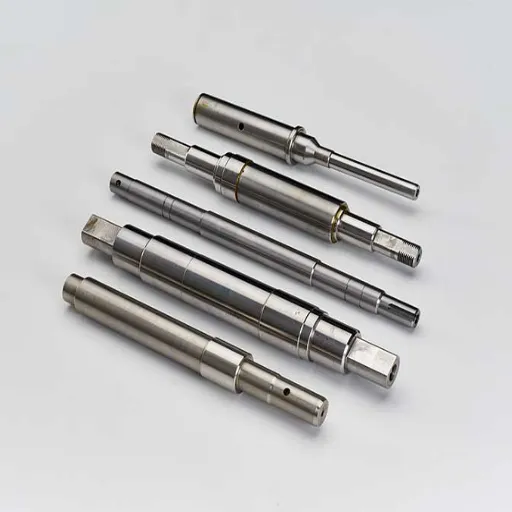
Best Practices for Extending Shaft Lifespan
The longest life operational shaft for electric motors must be given rigorous maintenance and the best diagnostic systems available. Precise alignment of the shaft will help in avoiding excessive stresses that cause either fatigue or misalignment-type failures. Use a modern laser alignment system for alignment with high precision, thus minimizing vibrations and mechanical wear.
Another important issue for shaft longevity is regular lubrication. Apply the best lubricants according to the manufacturer’s recommendations while setting a lubrication schedule according to the operating parameters of load, speed, and temperature. Also, keep checking oil levels and contamination through oil analysis for wear particle detection or lubricant degradation.
Have another system of real-time condition monitoring implemented so that it becomes possible to avoid failure. In that case, sensors such as vibration analysis and thermal imaging should be used to give an early warning of misalignment, thermal expansion, and bearing failure. When diagnostic methods are used effectively in conjunction with the data collection and analysis, fault repairs can then become predictive before faults really develop.
Shafts also require environmental protection from moisture, dust, and corrosive agents. Regular inspection for signs of corrosion or surface damage is important. Applying a protective coating or sealant would be of added benefit, especially in high-moisture and chemically aggressive environments.
Following these detailed best practices, incorporating the latest monitoring and diagnostic solutions, will allow an organization to improve the reliability and performance of electric motor shafts and thus aid in reducing downtime and lowering the total cost of ownership.
Maintenance Techniques to Ensure Optimal Performance
Proper maintenance of electric motor shafts is a multi-dimensional facet of engineering that sets preventive measures and diagnostic tools in place. Bearing lubrication should be applied regularly to reduce friction and wear, since a significant factor in shaft deterioration is insufficient lubrication. The alignment of the motor shaft to any equipment that it may engage must be performed with great precision so that stresses do not affect imbalances that could yield a premature shaft failure.
Another method that can prove essential to detect anything irregular, such as misalignment, looseness, or bearing failures, is vibration analysis. Used alongside modern condition-monitoring systems, this method provides real-time insights into mechanical health. Moreover, thermal imaging may be executed to find hotspots signifying excessive friction or electrical faults.
In addition, following tests for surface damages, cracks, or corrosion are to be conducted regularly, whereas established industry standards such as those issued by ISO or IEEE must be assessed. The combination of ultrasonic and magnetic particle inspections increases defect detection accuracy, thus facilitating speedy rectification. By performing well-structured maintenance in conjunction with the latest diagnostic techniques, the business will see the motor shafts serving for longer periods with reduced operational downtime and finally lower the cost of maintenance.
Role of Bearings in Motor Shaft Maintenance
Bearings are at the heart of motor shaft maintenance, minimizing friction that occurs between moving parts and acting as supports for radial and axial loads to make sure that the works smoothly. Chosen and installed properly and maintained adequately throughout, the bearings help motor shafts resist premature failure or extend their service life. The following five emphasize the role bearings play in the maintenance of motor shafts:
- Load Capacity: Bearings can be of varying types to suit radial loads, axial loads, or both. For example, ball bearings are best for relatively low loads, whereas roller bearings tend to be used for high radial loads. Proper distribution of load will prevent wear and tear and extend operational life.
- Proper Lubrication: Lubrication is needed to minimize friction with heat generation between working contacts. Applying excellent quality lubricant suited for the particular bearing will keep rotations smooth and will prevent the chances of overheating or contamination, which could be fatal for the bearings and motor shaft.
- Noise and Vibration: Bearings further cut down on vibrations and noise during equipment operation if installed and maintained proficiently. As the system slows down, stresses on the motor shaft and adjoining components are reduced and stabilized.
- Alignment: Bearings help maintain accuracy in shaft alignment. Alignment of the shaft increases bearing and shaft stress, which leads to a rapid rate of wear or sudden failure. Bearing systems and alignment tools with advanced design can surely stop misalignment.
- Thermal Stability: Bearings are designed to work under certain temperature conditions. Heat-resistant bearing materials and design features for proper heat dissipation ensure that any extreme temperature effects are kept away from the motor shaft performance, especially in high-speed applications.
Bearings, through regular maintenance, inspection, and timely repair, bring about improvements in the working reliability and life of the motor shafts.
Innovations and Trends in Electric Motor Shaft Technology
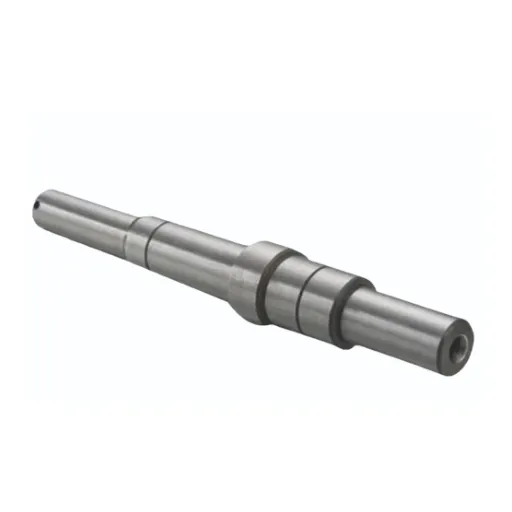
Recent Advancements in Motor Shaft Design
With the passing years, more and more improvements have gone into motor shaft technology as the demand for greater performance, durability, adaptability, and so on has been placed in various industrial areas. One such major improvement has been the incorporation of composites made from lightweight materials, such as carbon fiber-reinforced polymers. A great compromise between strength and weight-loading would curb rotational inertia in motor shafts; hence, the shafts themselves would support high bending stresses and loads without significant deformation. Opportunities have been offered by this development, particularly in the aerospace and renewable energy sectors, where efficiency matters.
Other developments involved 3D-printing technologies and CNC machining at extremely fine levels of precision. These technicalities enable the fabrication of shafts with difficult geometries that are specific to an application and, therefore, were considered impossible with conventional fabrication techniques. They further assist in improving dynamic balancing and accurate alignment conditions that reduce vibrations during operation and noise levels.
In addition, enhanced surface treatment methods, such as plasma nitriding and laser hardening, have been applied to significantly extend the wear resistance and fatigue strength of motor shafts. Hence, these ensure the long operational lives of shafts in difficult environments prone to corrosion or exposure to temperature extremes.
Embedded sensors within motor shafts have recently garnered attention for real-time monitoring of torque, vibration levels, temperature, and so forth, allowing predictive maintenance and consequent diminished unexpected downtimes. These advances put weight on the joint of material science, precision manufacturing, and smart technology in shaping further evolution in motor shaft design.
Impact of New Technologies on Electric Motor Efficiency
Electric motors have seen gains in efficiency, performance, and operational reliability with the adoption of new technology. Using such technology, motor manufacturers have attempted to come up with cheaper motors that consume less energy, have a longer work-life, and provide higher densities of torque. Here are five such technological innovations where electric motors see improvements in electrical efficiency:
- Advanced Magnetic Materials: The application of better magnetic materials, such as rare-earth magnets and amorphous metals, has allowed electric motors to cut down considerably on core losses. For example, neodymium magnets increase motor efficiency by 5-10% whilst allowing compact radiator designs.
- Wide-Bandgap (WBG) Semiconductors: If the power electronics can be made by exploitation of WBG materials like silicon carbide (SiC) and gallium nitride (GaN), higher switching speeds and reduced conduction losses may be achieved in motor drives, thus increasing motor efficiency by on average 15%, in some applications.
- Optimization of Rotor and Stator Design: Recent advances in CAD and FEA tools have made the optimization of rotor and stator geometry possible. Skewed rotor bars and advanced lamination stacking have been used to reduce eddy current losses and also improve the conversion efficiency of motors.
- Integration of IoT and Smart Sensors: The ease of enabling devices and monitoring installations incorporated into IoT revolutionized monitoring and control capabilities. Systems now provide operating condition data on charge, temperature, and vibration while predictive algorithms optimize maintenance schedules and reduce unplanned energy losses.
- Additive Manufacturing (3D Printing):3D printing makes it possible to build lightweight and complex motor features for enhanced material efficiency and heat exhaust. This technique can, therefore, reduce material waste by about 30%, which works in favor of resource efficiency and motor performance.
Technology-wise, all of these have shown how modern technologies are gradually advancing the transformation of electric motors for extraordinary levels of efficiency and reliability, as in alignment with growing concepts of sustainability and energy conservation.
Future Trends in Electric Motor Shaft Development
With every passing day, some key trends and innovations more dominate the conversation around the future of electric motor shaft development. Foremost, the demand for advanced materials is on the rise, with continuous research being conducted into high-strength but lightweight alloys and composite materials. The materials aim to optimize torque transmission while reducing the shaft weight factor, which directly enhances the overall energy efficiency of the motor. Higher considerations on sustainability now also boost the use of recyclable and eco-friendly materials in line with global-level green manufacturing initiatives.
Another major development is that precision manufacturing processes will be ever more employed, notably the adoption of additive manufacturing and CNC machining. This production technology allows manufacturers to achieve tighter tolerances and greater customization performance for motors in highly specialized applications. In addition, advanced manufacturing minimizes material wastage, enabling a more environmentally friendly production process while opening the door to more design freedom for shafts that satisfy specific industry requirements.
Last but not least, the infusion of smarts and sensors onto the shafts is a new realm to watch. Embedding sensors able to measure torque, vibration, and temperature will allow the shaft design to feed into predictive maintenance schemes and enhance motor the big picture being embedding and connecting industrial equipment via the IoT to expedite operational efficiency and systems reliability across industries. Taken together, these represent a thrust toward electric motor shaft development that is smart, green, and highly efficient.
Frequently Asked Questions (FAQ)
Q: What is an electric motor shaft?
A: An electric motor shaft is a cylindrical piece that transmits mechanical power output from the motor to the load. This is an integral part of the motor construction because it allows the motor to rotate and deliver power to various applications.
Q: How does winding affect the performance of an electric motor shaft?
A: The winding of an electric motor shaft causes a motor to have different torque-speed characteristics. Properly designed windings provide electrical characteristics that assure dependable working of the motor and its best performance.
Q: How do the motor bearings affect the electric motor shaft?
A: The motor bearings protect the electric motor shaft, allowing it to turn freely with a minimum of friction. The right motor bearing selection and maintenance prevent mechanical failure ensuring nonstop operation in service life.
Q: How do you select the right electric motor for specific applications?
A: Motor selection consists of noting horsepower, physical size, operating speed, and how it fits the application. By understanding the specific requirements, one can choose the motor, either DC or VFD-driven, for that application.
Q: What are the major reasons for the failure of the motor with respect to the electric motor shaft?
A: Common reasons of failure would include mechanical failures as a result of wear and tear, badly alignment, insufficient lubrication, etc. In ensuring that the motor and shaft are correctly mounted and protected from wear, their life will be considerably extended.
Q: Can the electric motor shaft affect HVAC system efficiency?
A: Yes, the electric motor shaft can affect HVAC system efficiency. An electric motor shaft well designed to work at correct velocity and thus RPM for motors used in HVAC applications will offer better performance and energy savings.
Q: What is the importance of VFDs to electric motor shafts?
A: Variable Frequency Drives (VFDs) enable precise control of the motor speed and torque, thereby optimizing the functioning of the electric motor shaft. Hence, energy costs are reduced, and the life of the motor is improved.
Q: How does the physical size of the electric motor shaft affect its performance?
A: The physical size of the electric motor shaft affects its torque and power output capacity. A correctly sized shaft provides adequate service and reduces the chance of mechanical failure, especially in high-horsepower work.
Q: What are some applications of electric motor shafts in power stations?
A: Electric motor shafts have varied applications in power stations, including driving pumps, generators, and fans. Their robustness and high RPM capability make them a vital feature, signaling efficient and reliable operations of power generation systems.
Q: How does one protect an electric motor shaft from wear and tear?
A: Protection of an electric motor shaft involves regular maintenance, guaranteeing that it is correctly aligned during installation, and using high-quality motor bearings. Having these measures in place will minimize wear and extend the motor shaft life.
UCTH213-40J-300 with Setscrew(inch)
CNSORDERNO: Normal-duty(2)
TOGN: UCTH213-40J-300
SDI: B-R1/8
SD: 2 1/2
UCTH212-39J-300 with Setscrew(inch)
CNSORDERNO: Normal-duty(2)
TOGN: UCTH212-39J-300
SDI: B-R1/8
SD: 2 7/16
UCTH212-38J-300 with Setscrew(inch)
CNSORDERNO: Normal-duty(2)
TOGN: UCTH212-38J-300
SDI: B-R1/8
SD: 2 3/8
UCTH212-36J-300 with Setscrew(inch)
CNSORDERNO: Normal-duty(2)
TOGN: UCTH212-36J-300
SDI: B-R1/8
SD: 2 1/4
UCTH211-35J-300 with Setscrew(inch)
CNSORDERNO: Normal-duty(2)
TOGN: UCTH211-35J-300
SDI: B-R1/8
SD: 2 3/16
UCTH211-34J-300 with Setscrew(inch)
CNSORDERNO: Normal-duty(2)
TOGN: UCTH211-34J-300
SDI: B-R1/8
SD: 2 1/8









